Tala
Tala is a town fifty kilometres west of Guadalajara.
Hacienda del Refugio
The Hacienda del Refugio was acquired by the Orendain family in 1866. With its extensive agave plantations the family began to develop modern stills to produce high quality mezcal for exports to the United States and El Salvador. By 1884 the hacienda was renowned in Jalisco, producing 150,000 litres per year.
Leopoldo G. Oredain produced a 10c note.
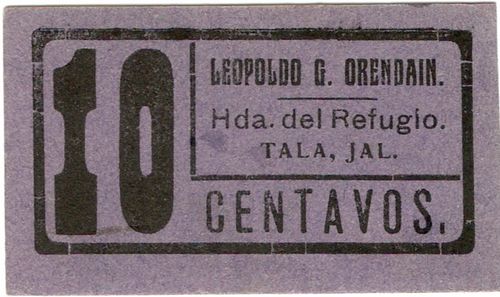 M2688 10c Hacienda del Refugio
M2688 10c Hacienda del Refugio
Leopoldo G. Orendain Orendain and his wife Genoveva Gutiérrez Rioseco had nine children, the first of whom was Leopoldo I. Odendain, born on 21 January 1898. He became a businessman, though he was also interested in history and social science, and in 1944 was appointed manager of the Banco Industrial de Jalisco, a post he held until his death on 4 May 1972.
Hacienda de San Juan de los Arcos
At the end of the 19th century the hacienda de Cuisillos passed from Simón del Llano to one of his daughters, Josefa Llano Capetillo, and, with her marriage in 1867 to Manuel Górtazar Llano, became the property of the Gortázar del Llano family, who split it into two, Cuisillos and San Juan de los Arcos.
The latter was owned by Manuel Górtazar y Llano. It was the first to be recorded as producing cartones during the Revolution. In the beginning these were for measures of maize, but later were for units of currency.
Series 1
The first issue was modelo 4502, produced by Juan Kaiser in November 1913.
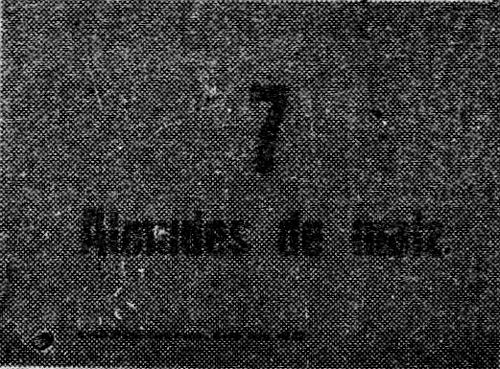 M2675 7 almudes Hacienda de San Juan de los Arcos
M2675 7 almudes Hacienda de San Juan de los Arcos
| total number |
total value |
||
| ½ almud | 250 | square cartón: an almud is a measure of maize |
|
| 1 almud | 250 | ||
| 2 almudes | 500 | ||
| 3 almudes | 500 | ||
| 4 almudes | 500 | ||
| 5 almudes | 1,000 | ||
| 6 almudes | 1,000 | ||
| 7 almudes | 1,000 | ||
| 8 almudes | 500 | ||
| 9 almudes | 250 | ||
| 10 almudes | 500 | ||
| 12 almudes | 250 | ||
| 6,500 |
Series 2
Modelo 4716 was produced in March 1914.
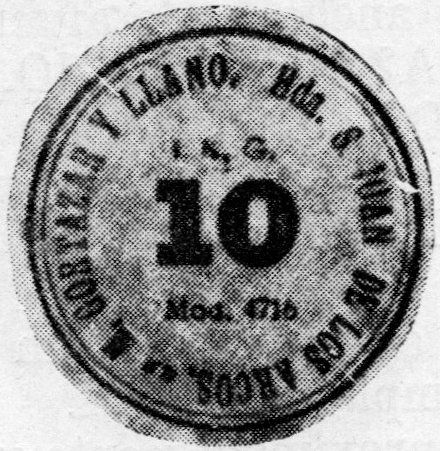 M2663 10c Hacienda de San Juan de los Arcos
M2663 10c Hacienda de San Juan de los Arcos
| total number |
total value |
||
| 1c | 500 | $ 5.00 | round brown cartón |
| 2c | 500 | 10.00 | |
| 5c | 1,000 | 50.00 | |
| 10c | 500 | 50.00 | |
| 20c | 500 | 100.00 | |
| 50c | 500 | 250.00 | |
| 3,500 | $465.00 |
Series 3
Finally modelo 5248, produced on 19 May 1915.
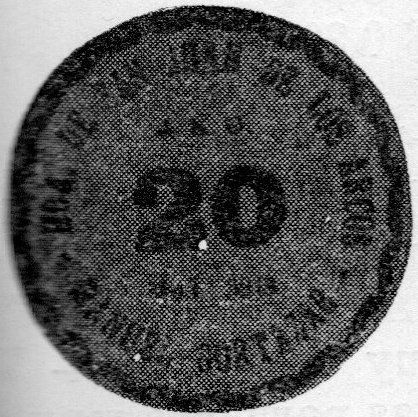
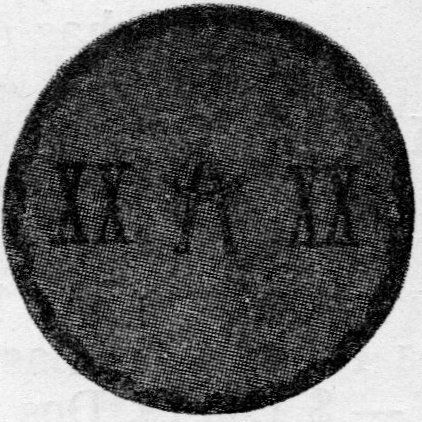 M2664 20c Hacienda de San Juan de los Arcos
M2664 20c Hacienda de San Juan de los Arcos
| total number |
total value |
||
| 1c | 2,000 | $ 20.00 | round red cartón |
| 5c | 400 | 20.00 | |
| 10c | 200 | 20.00 | |
| 20c | 200 | 40.00 | |
| 50c | 100 | 50.00 | |
| 100c | 100 | 100.00 | |
| 3,000 | $250.00 |
Hacienda de Cuisillos
At the end of the 19th century the hacienda de Cuisillos passed from Simón del Llano to one of his daughters, Josefa, and, on marriage, became the property of the Gortázar del Llano family, who split it into two, Cuisillos and San Juan de los Arcos.
These cartones were modelo 4636, produced by Juan Kaiser on 31 January 1914, for Juan Gortázar, Manuel's son.
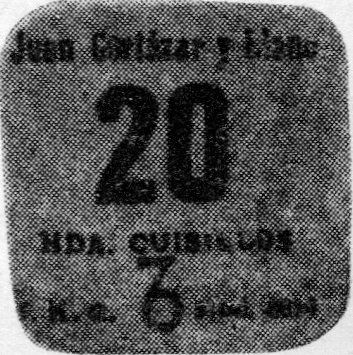 M2656 20c Hacienda de Cuisillos
M2656 20c Hacienda de Cuisillos
| Value | Number issued |
Total | Comment |
| 1c | 200 | $ 20.00 | square café cartón |
| 5c | 1,300 | 65.00 | |
| 10c | 1,000 | 100.00 | |
| 20c | 1,000 | 200.00 | |
| 50c | 1,000 | 500.00 | |
| $1 | 500 | 500.00 | |
| 5,000 | $1,385.00 |
Hacienda de Huastla
This was owned by Lic. Odilón J. Orendáin.
These were modelo 5249, produced by Juan Kaiser on 21 May 1915.
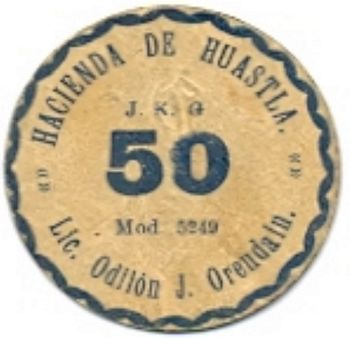
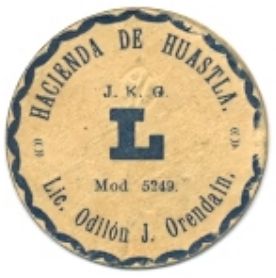 M2685 50c Hacienda de Huastla
M2685 50c Hacienda de Huastla
| Number issued |
Total | ||
| 1c | 750 | $ 7.50 | round manilla cartón |
| 5c | 750 | 37.50 | |
| 10c | 750 | 75.00 | |
| 20c | 750 | 150.00 | |
| 50c | 500 | 250.00 | |
| 100c | 500 | 500.00 | |
| 4,000 | $1,120.00 |
Tlatepaque
Rancho "Las Pintas"
Las Pintas in Tlatepaque has now been subsumed by the growth of Guadalajara.
José Ventura Parra bought the ranch on 5 March 1915 and, though he sold off several portions (fraccionamientos), still owned it in the mid 1920s.
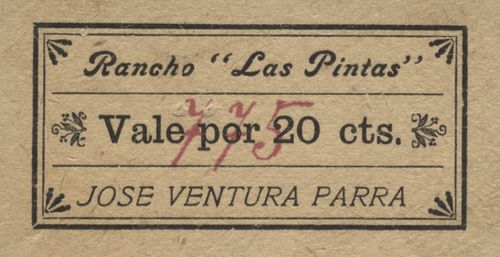 M4350 20c Rancho "Las Pintas"
M4350 20c Rancho "Las Pintas"
| from | to | total number |
total value |
||
| 20c | includes numbers 723 to 775 |
Note number 723 was dated 15 May 1919, a time when Guadalajara still had not received any fractional coinage.
